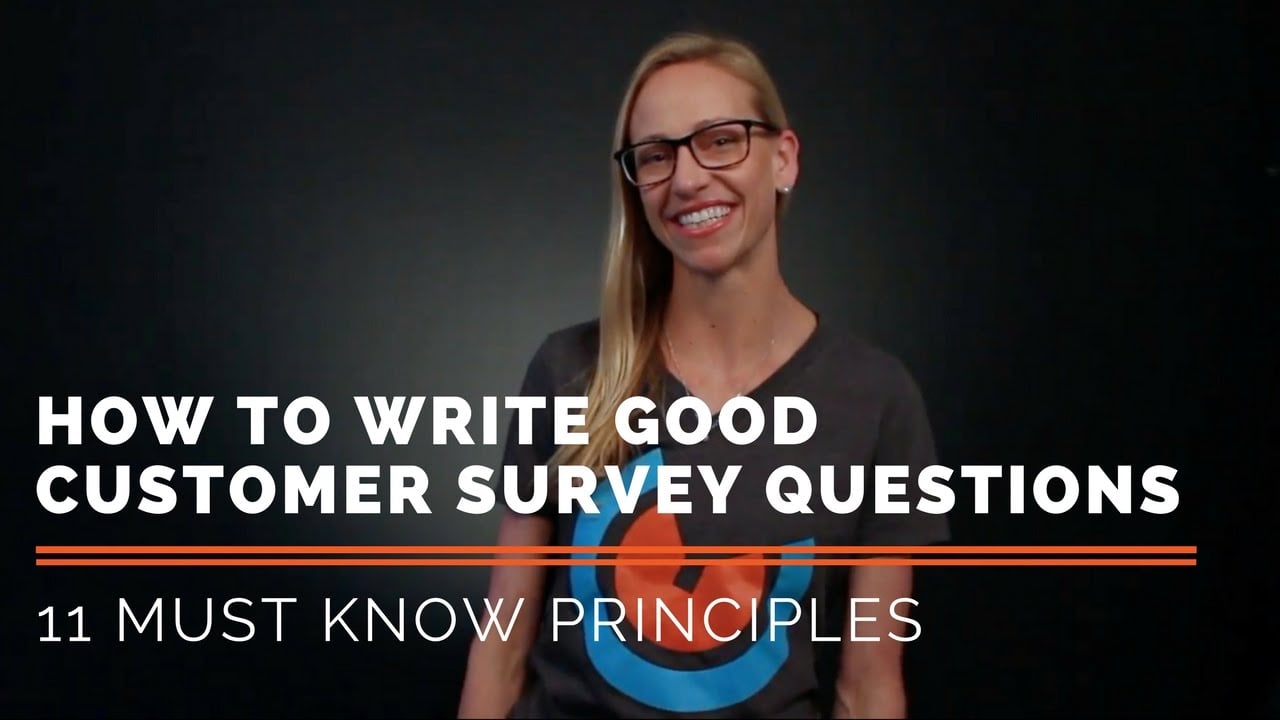Writing Habits to Quit ASAP
Over the years of our daily writing and research escapades, we’ve witnessed our fair share of bad writing. Trust us, it hurts. As copywriters...
I know what I am looking for, and would like to chat.
A team of data-driven marketers obsessed with generating revenue for our clients.
Because the proof is in the pudding.
At Campaign Creators we live by three principles: Autonomy, Mastery, Purpose.
4 min read
![]() Tammy Duggan-Herd
:
2/10/17 10:28 AM
Tammy Duggan-Herd
:
2/10/17 10:28 AM

You can use customer surveys to improve a product or service, measure customer satisfaction, improve customer retention, provide data for business decisions, and more. And while it seems simple, there is an art and science to writing survey questions.
To start, the goal of writing a survey question is for every potential respondent to interpret it in the same way, be able to respond accurately and be willing to answer. To do this you must put yourself in the shoes of those you plan to survey – in this case, your customers. As you create and evaluate your questions you should continually check in and remind yourself, “I am not the one answering this question, my customer is.”
Now, rules and principles for how to do anything, no matter how well-intended, should not be considered absolute. With that bit of warning, I (and several before me) have found the following guiding principles for writing survey questions extremely useful.
Do this by finding synonyms that are likely to be understood by more people. For example replace candid with honest, leisure with free time, subnational region with area of the country.
A rule of thumb: when a word exceeds 6 or 7 letters, chances are a shorter and easily understood word can be substituted.
The problem with long questions is the fact that when people read questions they attempt to be efficient, and give uneven attention to each word. So if you don't want important words to get missed, remove the unimportant or redundant ones.
Bad: Were you very satisfied, somewhat satisfied, somewhat dissatisfied, very dissatisfied or did you feel neutral with your online checkout experience?
Good: Which of the following best described how you felt about your online checkout experience?
While it’s tempting to meet the goal of minimizing words by using incomplete sentences, don’t. People often provide surprisingly erroneous answers to when you do not use complete sentences to ask questions.
Bad: Number of products purchased _____
Good: How many products did you purchase? ______
Although customers may be able to more easily answer this question:
Bad: How often did you buy a product from our website in the last year?
Enormous variation will exist in what respondents mean by these answers. A better option would be:
Good: How often did you buy a product from our website in the last year?
For example, we are asking the person to spend a lot of unnecessary time trying to come up with a calculated answer in the bad version of the question below. We can take away some of that burden by giving them some answer options like in the good version.
Bad: About how many books did you purchase in the last year?_____
Good: About how many books did you purchase in the last year?
This is important to help avoid biasing your customer in one direction or another. People will interpret the middle option as the neutral point, regardless of how you label it.
For example, many customers will incorrectly assume “somewhat satisfied” is the middle of the scale in the bad version of the question below.
Bad: How satisfied or dissatisfied were you with the packaging your product arrived in?
Whereas, they will correctly assume that “Neither satisfied nor dissatisfied” is the middle of the scale in the good version.
Good: How satisfied or dissatisfied were you with the packaging your product arrived in?
That's right, having a neutral opinion is not the same as having no opinion at all.
Good: To what extent do you agree or disagree with this statement “The sales associates at this company were helpful.”
It may seem funny or unnatural to do this but is helps avoid biasing your customer in one direction.
Bad: How satisfied were you with the quality of the product?
Good: How satisfied or dissatisfied were you with the quality of the product?
I see this principle violated all the time when answer choices are a range of numbers. For example, how would I answer the question below if my friend shared a Facebook Ad on social media?
Which one of these sources did you first learn about our company from?
Bad: Do you favor or oppose not allowing companies to add you to email lists without your explicit permission?
What did you just ask me?!
Good: Do you favor or oppose allowing companies to add you to email lists without your explicit permission?
Essentially don't ask someone two questions in one. For example, how would I answer the bad version below if I was satisfied with my product but not the packaging? In this case you need to ask about the product and packaging separately.
Bad: Were you satisfied with the product and it’s packaging?
Good:
I hope you find these principles helpful. But remember, question writing is not performed in a vacuum. Remind yourself to evaluate your questions from your customer's perspective, ask others to read your questions and provide feedback. If you need help gathering valuable insight, feedback, and testimonials from your customers, check out our Express by Campaign Creators Customer Feedback Package for HubSpot.
Information contained in this blog was derived from: Dillman, D.A. (2007). Mail and Internet Surveys: The Tailored Design Method, 2nd edition.

Over the years of our daily writing and research escapades, we’ve witnessed our fair share of bad writing. Trust us, it hurts. As copywriters...

Salesmen often get a bad rap. Practiced in the art of hyperbole, these pigeonholed hustlers of the consumer age make their living on the...

As marketers, we must accept that every time we reach out to our audience, whether through an email, a social post, or an ad, we are interrupting...